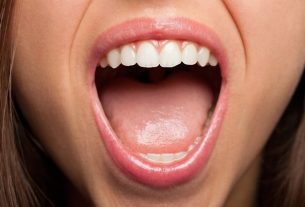Dementia with Lewy bodies is a degenerative disease of the brain, which compromises regions responsible for functions such as memory, thinking and movement, and is caused by the accumulation of proteins, known as Lewy bodies, in brain tissue.
This disease appears with advancing age, being more common over 60 years of age, and causes symptoms such as hallucinations, progressive memory loss and difficulty concentrating, as well as tremors and muscle rigidity, being considered the second most common type of degenerative dementia, right after Alzheimer’s.
Although there is no cure for dementia with Lewy bodies, it is possible to carry out treatment and control symptoms, using medicines advised by a doctor, such as Quetiapine or Donepezil, for example, which alleviate some symptoms, in addition to investing in physiotherapy. and occupational therapy. In this way, the person can live for many years with maximum independence and quality of life.

Main symptoms
Dementia with Lewy bodies has symptoms that appear gradually and slowly worsen. The main ones are:
- Loss of mental capabilitiescalled cognitive functions, such as memory, concentration, attention, communication and language;
- Mental confusion and disorientation, that oscillate between moments of extreme confusion and calmer moments;
- Tremors and muscle stiffnessknown as parkinsonism, as they mimic Parkinson’s movements;
- Visual hallucinationsin which the person sees non-existent things, such as animals or children, for example;
- Difficulty judging distancescalled visuospatial changes, which can lead to frequent falls;
- Changes in the REM phase of sleepwhich can manifest itself with movements, talking or screaming during sleep.
Generally, changes in mental abilities appear first, and as the disease progresses, changes in movement appear, and mental confusion becomes more severe. It is also common for there to be symptoms of mood changes, such as depression and apathy.
Due to similar symptoms, this disease can be confused with Alzheimer’s or Parkinson’s. There is still no known cause for Lewy Body Dementia, so anyone can develop this disease, although it appears to be more common in men over the age of 60.
How to confirm the diagnosis
The diagnosis of dementia with Lewy bodies is made by a neurologist, geriatrician or psychiatrist, after a complete assessment of symptoms, family history and physical examination.
Although some imaging tests, such as computed tomography or magnetic resonance imaging, can help identify degeneration in some parts of the brain, they cannot identify Lewy bodies, which can only be observed after death. It is equally important to use rating scales to assess fluctuations in cognitive abilities.
This way, the doctor will differentiate this disease from others with similar symptoms, such as Alzheimer’s and Parkinson’s, and indicate the most appropriate treatment.
Make an appointment with the nearest neurologist so that the diagnosis can be made and treatment can begin:
Taking care of your health has never been easier!
Possible causes
It has been observed that there are abnormal deposits of the protein alpha-synuclein, also called Lewy body, in the nucleus of neurons, which leads to the development of the characteristic signs and symptoms of the disease.
However, Lewy bodies can also be found in other diseases, such as Alzheimer’s or Down syndrome and, therefore, the set of mental symptoms they cause is called dementia as Lewy bodies.
How the treatment is carried out
Since there is no cure for dementia with Lewy bodies, treatment must be guided by a neurologist, geriatrician or psychiatrist to alleviate each person’s symptoms and improve the quality of life of the person with it.
Therefore, the main types of treatment include:
- Antipsychotic medicationssuch as Quetiapine or Olanzapine: they allow to reduce the frequency of hallucinations, however, they can cause several side effects or worsen the person’s general condition and, therefore, when used, they must be constantly evaluated by a doctor;
- Remedies for memorysuch as Donepezil or Rivastigmine: increase the production of neurotransmitters in the brain, which can improve concentration, memory and reduce the emergence of hallucinations and other behavioral problems;
- Medicines to improve motor skills, such as Carbidopa and Levodopa, widely used in Parkinson’s: they reduce motor symptoms such as tremors, muscle stiffness or slowness of movement. However, they can worsen hallucinations and confusion and can therefore be combined with memory medications;
- Antidepressant medicationssuch as Sertraline or Citalopam: used to improve depressive symptoms, in addition to helping to control behavior and regulate sleep;
- Physiotherapy: helps maintain muscle strength and flexibility, in addition to improving cardiovascular capacity with various types of exercises;
- occupational therapy: It is very important to help maintain independence, teaching the person to do daily tasks with their new limitations.
Furthermore, to help combat symptoms of sadness, anxiety or frequent agitation, the caregiver can use other alternative medicine therapies such as aromatherapy, music therapy or massages, for example.
It is also recommended to exercise to keep your brain active, avoid smoking and adopt a healthy and balanced diet, giving preference to fruits and vegetables.
Bibliography
- GOLIMSTOK, Angel. Update on Lewy body disease. Rev. Hosp. Italian. B. Aires. Vol 37. 3 ed; 105-111, 2017
- CALLE, MARTIN. Dementia with Lewy bodies: diagnosis, symptoms and treatment. 2006. Available at: <https://www.elsevier.es/es-revista-medicina-familia-semergen-40-pdf-13086924>. Accessed on October 21, 2021

Sign up for our newsletter and stay up to date with exclusive news
that can transform your routine!
Warning: Undefined array key "title" in /home/storelat/public_html/wp-content/plugins/link-whisper-premium/templates/frontend/related-posts.php on line 12
Warning: Undefined array key "title_tag" in /home/storelat/public_html/wp-content/plugins/link-whisper-premium/templates/frontend/related-posts.php on line 13



